Resin adds a sculptural mystery to design
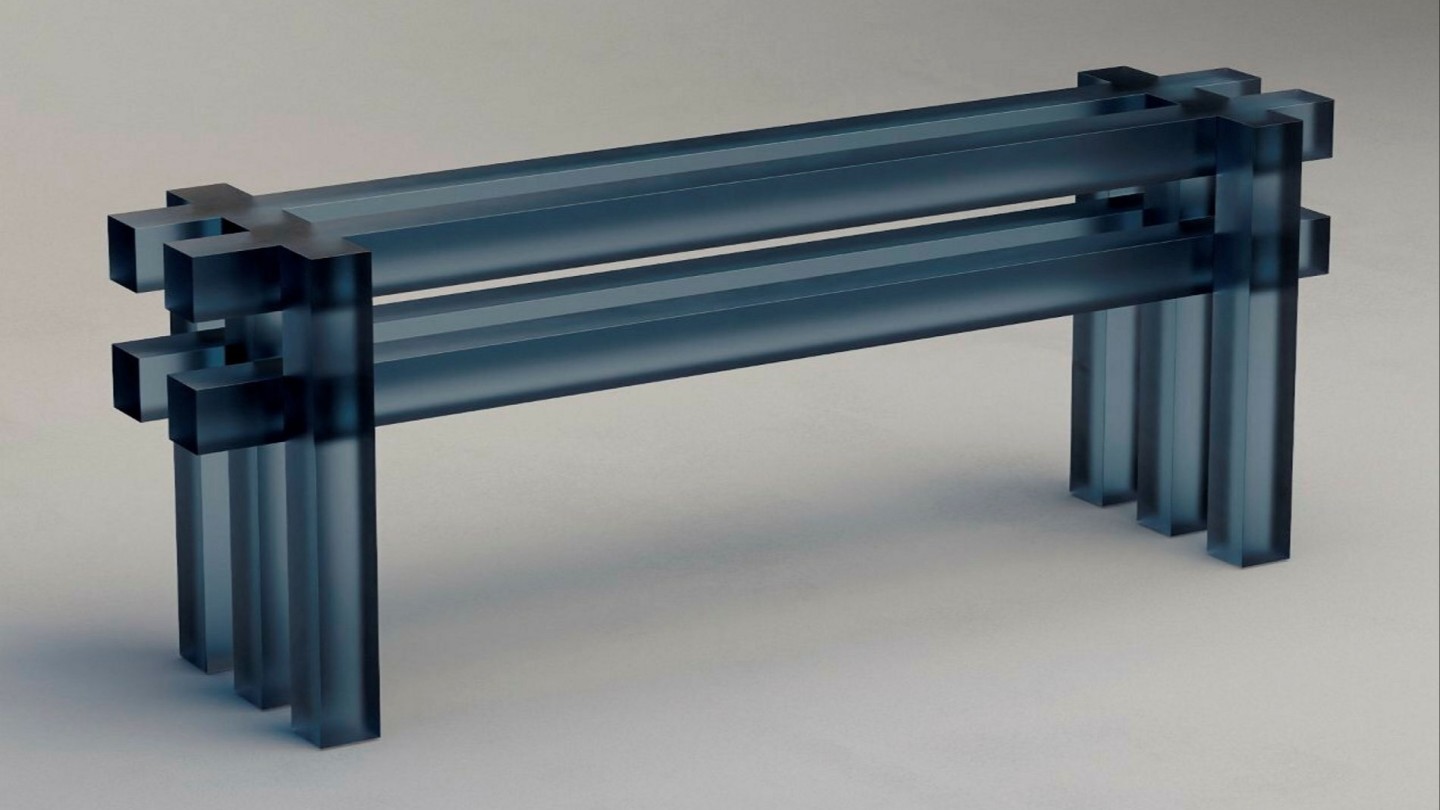
Roula Khalaf, Editor of the FT, selects her favourite stories in this weekly newsletter.
In 2012, the Italian designer Piergiorgio Robino embarked on an unusual conservation project. From his birthplace in the Langhe, an area of agriculture and ancient hill villages in northern Italy, he gathered wooden objects that had been made out of necessity over the centuries — milking stools, doors, ladders — and decided to cast them in resin. “It was a critique to show that in the future no one would know how to make things by hand,” says Robino, who is part of a group called Studio Nucleo and is based in Turin. “With technologies like 3D printing, we are losing basic skills, while mass production means we make more things than we need, and badly. I wanted to highlight that.”
Robino’s initial fascination was with insects trapped in amber — a natural phenomenon where creatures are attracted by the scent of resin as it oozes from the tree, then get stuck. “They are like time machines, bringing the past into the future,” he says. His own versions — Souvenir of the Last Century — function in the same way, but instead of amber, Robino pours clear synthetic resin around the objects in a specially made mould, in a process that can take up to 60 days.
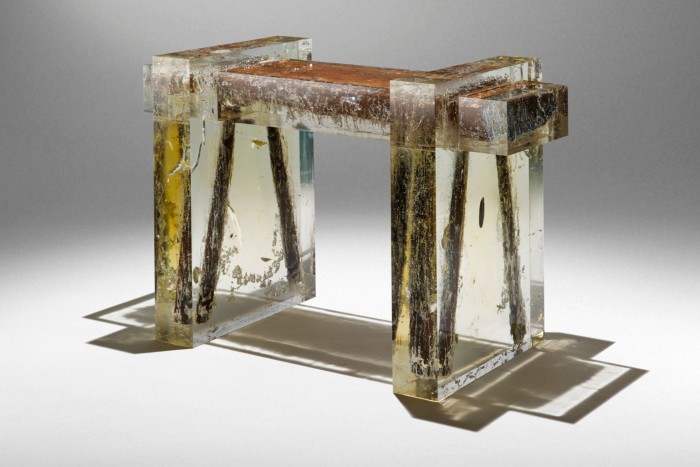
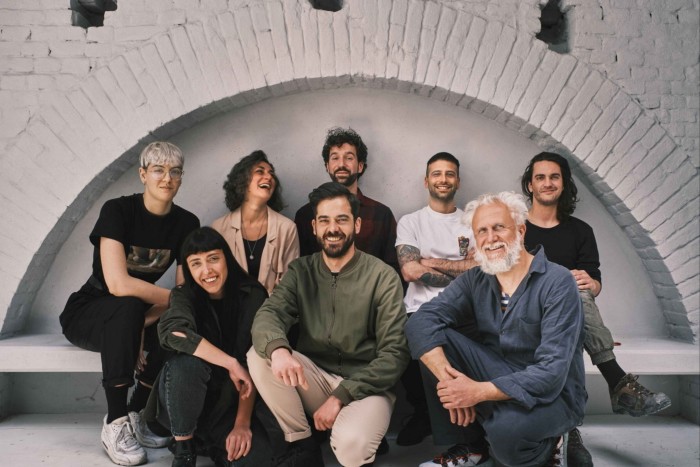
Visitors to the PAD London art and design fair (October 10-15) will find one of Robino’s pieces at the Ammann Gallery — an old bench suspended in a crystal-clear resin block. But elsewhere, they will find the same material used in a variety of ways. If not exactly eco-friendly in its composition (some forms are a petrochemical product), designers are attracted to synthetic resin for its ability to be anything from opaque to clear, and for its long-lasting quality. “If a piece is made well, it should last for hundreds of years,” says the Austrian designer Laurids Gallée.
Gallée spent nearly five years working at one of the foremost makers of resin works in Rotterdam, STRS, which creates individual pieces for high-end designers and artists. It has allowed him a mastery which he has now transferred to his own work. “I use polyester resin, which is the least toxic version,” he says (albeit is still not great for the environment). “And I feel OK making small series or unique pieces. It’s the exact opposite of something throwaway.”
Resin, he continues, has an extraordinary sculptural quality and a certain mystery in the way it can filter colour through light in its translucent form. In London, he is showing a navy resin bench at 88 Gallery. For this he makes a large sheet of material, then cuts it into strips to be reassembled. With the pieces glued together, the effect is seamless and the object, though solid, has a visually soluble quality.
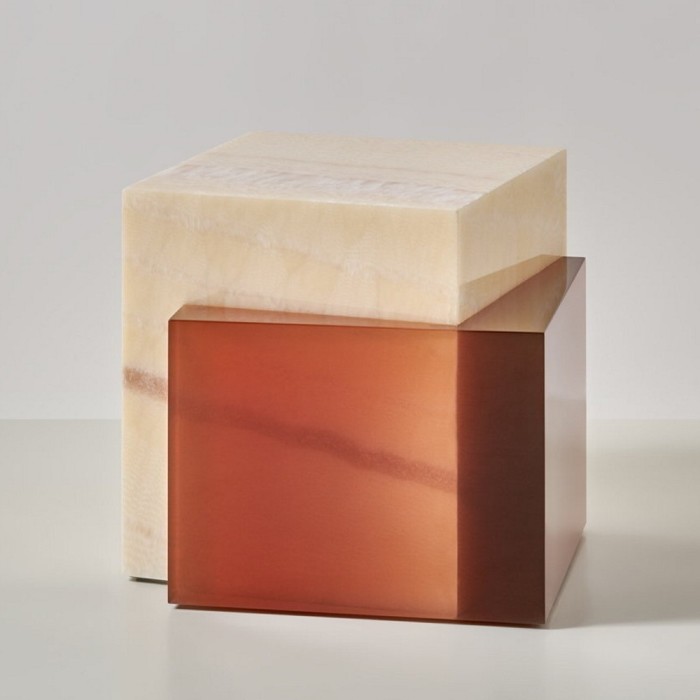
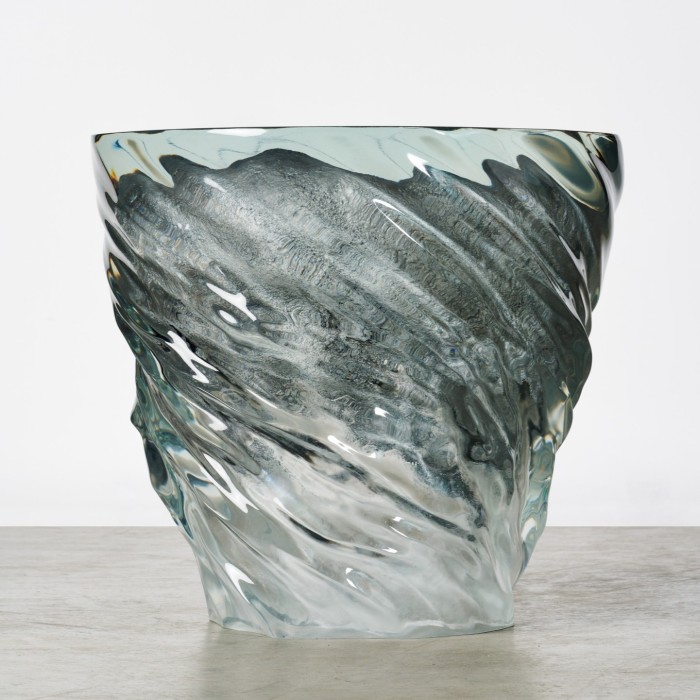
Sabine Marcelis, a Dutch-New Zealand designer who is also based in Rotterdam, made her name with her Candy Cubes eight years ago. The blocks of pastel-coloured resin, finished to a satin sheen, edges glowing almost white, tread a fine line between minimalism and full-on luxury. They are already considered a design classic. Her latest series of limited-edition pieces includes a side table, console and mirror (on show at Barcelona’s Side Gallery at PAD), which combine finely veined blocks of solid onyx with liquid-looking resin tops. “I chose a deep amber for the resin, which I derived from the natural colour of the veins in the onyx,” explains Marcelis. “Although I buy my pigments from a manufacturer, I then go on to create my own colours. Part of my love of resin is the way it carries colour and how I can manipulate that.”
Like other designers drawn to resin, Marcelis has also worked in glass. “You work in sheets and layers and it can take a lot longer to a lesser effect,” she says. Flavie Audi, a French-Lebanese designer working in London, agrees. “Glass itself is biodegradable,” she says, “but the process of its manufacture takes a lot more energy. A furnace will be running 24 hours a day.” Audi uses a bio-resin in her work, so-called because one-third of its composition is made of agricultural waste. For her, it is the illusory quality of resin that informs her work. The Vortex tables, for example, have an inner core coated in glass and metal powder which appear to swirl inside the completed piece in a kind of perpetual motion. “I feel it has a primal energy,” says Audi, who shows with the Milanese gallery Nilufar.
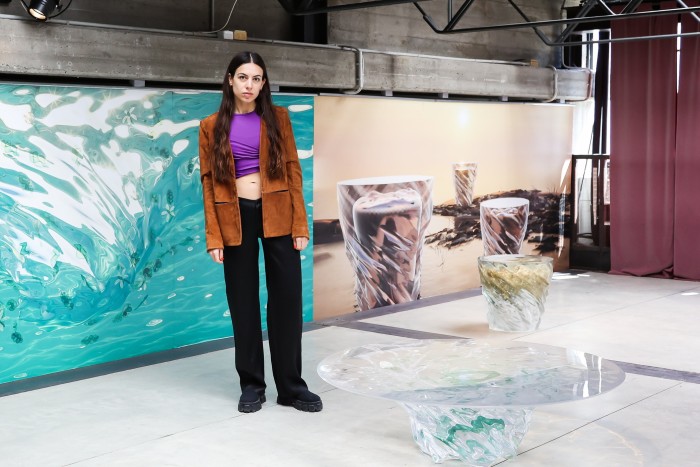
The American designer Chris Schanck likes resin’s more liquid properties, using it as a glossy coating on his baroque pieces that are assembled from clusters of found objects or carved out of sculpting foam, then covered with aluminium foil to which the resin is applied. “I used to use my bedroom as the resin room, and hand massage it on to the work,” says Schanck. “It was ideal, as I could go to sleep and set my alarm for 30-minute intervals between each layer.”
Now that Schanck’s work is in high demand (on show at David Gill), his set-up has moved on accordingly. “Each piece has a custom-made jig for rotating the work as the resin is applied, and a timer that creates the intervals to allow each layer to set. It’s more sophisticated, but the essence, and beauty of the finish, remains just the same.”
October 10-15, padesignart.com
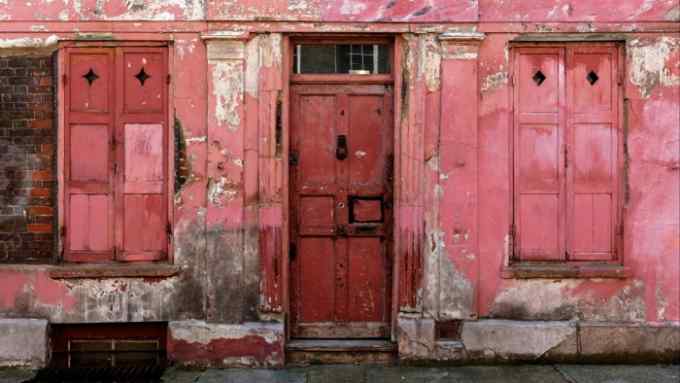
Comments